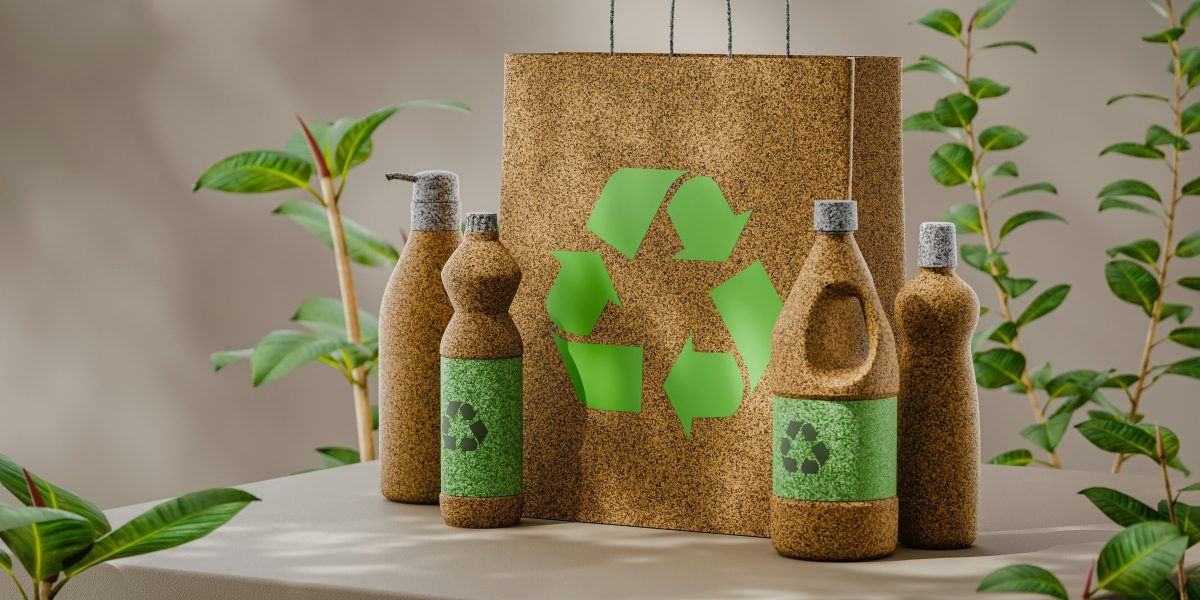As we navigate through the complexities of modern living, the shift toward eco-friendly consumer products is becoming increasingly evident. Sustainability is no longer just a passing trend; it’s a movement that’s gradually reshaping our lifestyles and influencing our purchasing decisions. More than ever, we are giving priority to products that not only meet our needs but also align with our values of environmental responsibility.
From biodegradable packaging to ethically sourced materials, the rise of green alternatives reflects a growing awareness of our impact on the planet. Even in everyday routines, small swaps, like using a hypochlorous acid spray for cleaning, demonstrate how innovation can support both convenience and eco-consciousness.
Beyond household products, our food choices are also shifting toward sustainability. Opting for locally sourced and responsibly grown foods not only supports farmers but also helps reduce the carbon footprint associated with transportation. For example, choosing bulk pecans is not just economical; it also encourages mindful consumption by minimizing wasteful packaging and supporting agricultural sustainability.
As consumers, we are becoming more informed and are increasingly asking for transparency from brands. This article explores how sustainability is driving innovation in consumer products and how it is influencing our everyday choices, one conscious purchase at a time.
Overview of Eco-Friendly Consumer Products
Eco-friendly consumer products encompass a range of items designed to minimize environmental impact. We are witnessing a growing demand for biodegradable packaging that reduces waste in landfills. These products break down naturally, potentially lessening pollution.
Sustainable materials, such as bamboo, hemp, and recycled plastics, represent another key trend. We are using these materials in everyday items, from clothing to home goods, encouraging more sustainable consumption. Products made from ethically sourced resources are gaining traction, as they often ensure fair labor practices and transparent supply chains.
We recognize the importance of renewable energy in producing eco-friendly products. Solar-powered gadgets and energy-efficient appliances contribute to lower carbon footprints, aligning with our commitment to sustainability. Certifications, like Energy Star and Fair Trade, help guide us toward more reliable, eco-friendly options.
Another noticeable trend is the rise of zero-waste products. Refillable containers and reusable shopping bags demonstrate our desire to reduce single-use plastics and promote a circular economy. Brands responding to consumer preferences often innovate by developing eco-friendly alternatives, such as plant-based cleaning supplies and organic personal care items.
We observe that eco-friendly consumer products not only reflect personal values but also influence market dynamics. Companies that prioritize sustainability appeal to environmentally conscious consumers. The growing movement is encouraging brands to adopt greener practices, which may shape the future of consumerism.
Factors Driving the Rise of Sustainability
Sustainability in consumer products is influenced by several key factors that shape our modern lifestyles. Understanding these drivers helps clarify the shift toward eco-friendly choices.
Consumer Awareness and Education
Consumer awareness and education play a significant role in promoting sustainable products. With access to information through various channels, consumers are becoming increasingly aware of the environmental impact of their choices. Reports suggest that 73% of millennials favor brands that demonstrate a commitment to sustainability. This heightened consciousness often leads to informed purchasing decisions, prompting brands to prioritize eco-friendly practices. Social media campaigns and documentaries also help enlighten us on ecological issues, enhancing our appreciation for sustainable alternatives. As a result, brand transparency regarding sourcing and manufacturing processes can influence loyalty, as consumers align their values with their purchases.
Technological Advancements
Technological advancements play an essential role in supporting sustainability in consumer products. Innovations in materials science allow for the creation of biodegradable and recyclable alternatives, reducing reliance on traditional plastics. For instance, some companies now use recycled ocean plastics in consumer goods, contributing to marine conservation efforts. Furthermore, eco-friendly technologies, such as solar energy and energy-efficient appliances, can help reduce carbon footprints in everyday usage. Research indicates that energy-efficient appliances can reduce energy consumption by 10-50%, depending on the product.
Trends in Eco-Friendly Products

The rise of eco-friendly products reflects our increasing commitment to sustainability. We observe innovative practices and materials that are driving this trend, leading to meaningful changes in consumer behavior.
Sustainable Materials and Manufacturing
We are noticing sustainable materials like organic cotton, bamboo, and recycled plastics gaining popularity. Brands are leveraging these alternatives to minimize environmental impact during production. Manufacturing processes now incorporate energy-efficient methods and closed-loop systems to reduce waste. The focus on local sourcing also enhances sustainability by cutting transportation emissions. Certifications, such as Global Organic Textile Standard (GOTS) and Forest Stewardship Council (FSC), provide consumers with assurance of the products’ eco-friendly credentials.
The Shift in Consumer Preferences
There is a noticeable shift in consumer preferences toward eco-friendly options. Reports suggest that 73% of consumers are open to changing their consumption habits to benefit the environment. Customers increasingly favor brands that demonstrate transparency about their environmental practices. Social media plays a crucial role in spreading awareness and influencing choices. The younger generations, particularly millennials and Gen Z, prioritize sustainability in their purchasing decisions, prompting brands to adapt and innovate in response to this growing demand.
Challenges and Limitations
Despite the rise of eco-friendly consumer products, several challenges and limitations may hinder broader adoption and effectiveness in promoting sustainability.
Misleading Marketing Practices
Misleading marketing practices create confusion for consumers. Greenwashing, where companies inaccurately claim eco-friendliness, can erode trust. Brands may label products as “natural” or “eco-friendly” without proper certifications, leading to skepticism among well-informed consumers. As a result, consumers may find it challenging to identify truly sustainable options amidst a sea of misleading claims. Enhanced regulatory oversight and clearer labeling could help alleviate these issues, guiding consumers toward making informed choices aligned with their values.
Accessibility and Affordability
Accessibility and affordability present significant challenges for eco-friendly products. Many sustainable options tend to be priced higher compared to conventional alternatives, potentially limiting access to higher-income consumers. Additionally, not all communities have access to stores offering a variety of eco-friendly products. This disparity restricts eco-conscious choices for low-income consumers and those in underserved areas. Collaborative efforts between manufacturers and retailers could improve distribution and reduce costs, making sustainability a more accessible option for all consumers. For a deeper dive into the importance of eco-friendly practices, check out The World Economic Forum.
Disclaimer: The information provided in this article is for general informational purposes only. While we strive to offer accurate and up-to-date content, the effectiveness of eco-friendly products and practices can vary depending on individual needs, preferences, and circumstances. Readers are encouraged to do their own research and consult with professionals where necessary before making purchasing decisions. The views expressed in this article are based on current trends and may evolve over time as new information and technologies emerge.

















